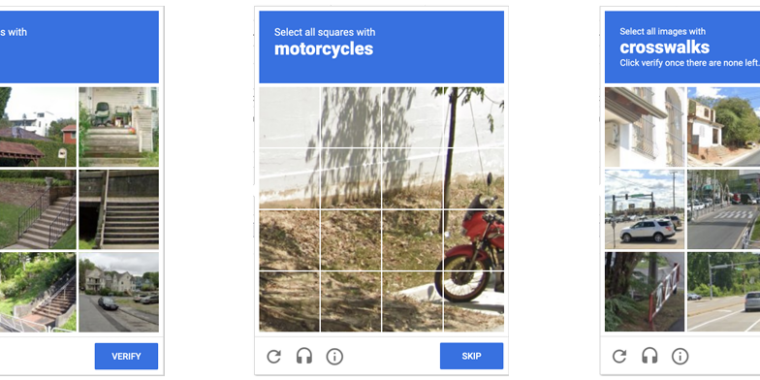- cross-posted to:
- technology@lemmy.zip
- technology@lemmy.world
- cross-posted to:
- technology@lemmy.zip
- technology@lemmy.world
Anyone who has been surfing the web for a while is probably used to clicking through a CAPTCHA grid of street images, identifying everyday objects to prove that they’re a human and not an automated bot. Now, though, new research claims that locally run bots using specially trained image-recognition models can match human-level performance in this style of CAPTCHA, achieving a 100 percent success rate despite being decidedly not human.
ETH Zurich PhD student Andreas Plesner and his colleagues’ new research, available as a pre-print paper, focuses on Google’s ReCAPTCHA v2, which challenges users to identify which street images in a grid contain items like bicycles, crosswalks, mountains, stairs, or traffic lights. Google began phasing that system out years ago in favor of an “invisible” reCAPTCHA v3 that analyzes user interactions rather than offering an explicit challenge.
Despite this, the older reCAPTCHA v2 is still used by millions of websites. And even sites that use the updated reCAPTCHA v3 will sometimes use reCAPTCHA v2 as a fallback when the updated system gives a user a low “human” confidence rating.



Maybe it’s lack of transit in the us, I don’t know. Almost every public school district I’m familiar with, uses standard yellow school buses to bring kids to and from school. However Boston city schools give the kids an MBTA pass - I don’t know if that differed by age - and I imagine that’s true of other downtown schools where there’s transit